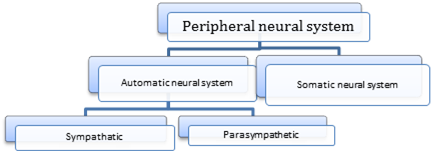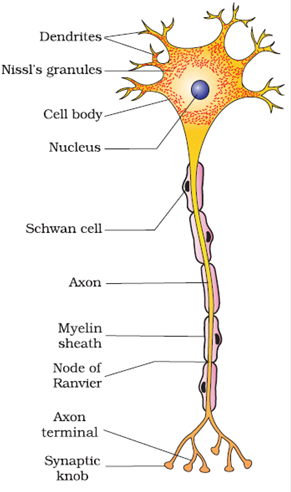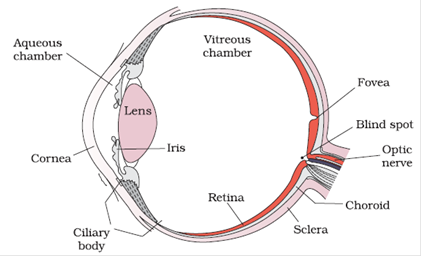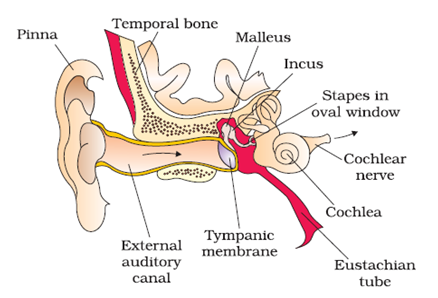CBSE Biology Chapter 21 Neural Control and Coordination class 11 Notes Biology in PDF are available for free download in myCBSEguide mobile app. The best app for CBSE students now provides Neural Control and Coordination class 11 Notes Biology latest chapter wise notes for quick preparation of CBSE exams and school based annual examinations. Class 11 Biology notes on Chapter 21 Neural Control and Coordination class 11 Notes Biology are also available for download in CBSE Guide website.
CBSE Guide Neural Control and Coordination class 11 Notes
CBSE guide notes are the comprehensive notes which covers the latest syllabus of CBSE and NCERT. It includes all the topics given in NCERT class 11 Biology text book. Users can download CBSE guide quick revision notes from myCBSEguide mobile app and my CBSE guide website.
Neural Control and Coordination class 11 Notes Biology
Download CBSE class 11th revision notes for Chapter 21 Neural Control and Coordination class 11 Notes Biology in PDF format for free. Download revision notes for Neural Control and Coordination class 11 Notes Biology and score high in exams. These are the Neural Control and Coordination class 11 Notes Biology prepared by team of expert teachers. The revision notes help you revise the whole chapter in minutes. Revising notes in exam days is on of the best tips recommended by teachers during exam days.
Download Revision Notes as PDF
CBSE Quick Revision Notes
CBSE Class-11 Biology
CHAPTER-21
Neural Control and Coordination class 11 Notes Biology
- Coordination is the process through which two or more organs interact and complement the function of each other.
- Neural system provides an organized network of point to point connection for quick coordination. The endocrine system provides chemical integration through hormones.
- Neural system of animals is composed of specialized cells called neuron, which can detect, receive and transmit different kinds of stimuli. In hydra neural system is composed of network of neuron. In insects it consists of brain and a number of ganglia. Vertebrates have highly developed neural system.
- Central nervous system (CNS) includes brain and spinal cord. It is the site for information processing and control.

- Peripheral nervous system includes all nerves associated with CNS. There are two types of nerve fibres-
- Afferent fibres- transmit impulses from tissue/organ to CNS.
- Efferent fibres- transmit regulatory impulses from CNS to concerned peripheral organs.
Somatic neural systems relay impulses from CNS to skeletal muscles. Autonomic neural system transmits impulses from CNS to involuntary system and smooth muscles.

Neuron as Structural and Functional Unit of Neural System
Neuron is made up of three major parts- cell body, dendrite and axon.
- Cell body contains cytoplasm, cell organelles and Nissl’s granules. Short fibres projecting out from cell body is called dendrites. The axon is long fibre having branched structure at the end that terminates into knob like structure called synaptic knob.
- Based on number of axon and dendrites neuron are of three types-
- Multipolar– one axon and two or more dendrite found in cerebral cortex.
- Bipolar– one axon and one dendrite found in retina of eyes.
- Unipolar– cell body with only one axon found in embryonic stage.

- There are two types of axon-
- Myelinated– fibres are enveloped with Schwann cells to form myelin sheath around the axon. The gap between two myelin sheaths is called nodes of Ranvier. Found in spinal and cranial nerves.
- Unmyelinated- fibre is enclosed by Schwann cells that do not form myelin sheath around the axon. Found in autonomous and somatic neural system.
Generation and Conduction of Nerve Impulse
- Ion channels are present in neural membrane which is selectively permeable to different ions. When neuron is not conducting impulse (resting), axonal membrane is more permeable to K+ ions and impermeable to Na+ ions.
- Ionic gradient across the resting membrane is maintained by active transport of ions by sodium-potassium pump. This will develop positive charge outside the axonal membrane and negative charge on inner side.

- The electrical potential difference across the resting membrane is called resting potential.
- When stimulus is applied at site A, the membrane becomes permeable to Na+ ions to make rapid influx of Na+ ions to create outer surface negatively charged and inner membrane positively charged that create Action Potential or nerve impulse.
- The nerve impulse from A moves to B in inner surface and B to A on outer surface. This process is repeated several times to transmit the impulse.
- Nerve impulse is transmitted from one neuron to another neuron through synapse.
- There are two types of synapse-
- Electrical synapse- the membrane of pre and post synaptic neuron is very close to each other and current flow directly from one neuron to another.
- Chemical synapse- pre and post synaptic neuron is separated by fluid filled space called synaptic cleft. Neurotransmitters are involved in transmission of impulses.
Central Neural System –Brain is the central information processing organ of our body and act as command and control centre. Human brain is protected by skull (cranium) and three layers of cranial meninges- outer dura mater, middle arachnoid and inner pia mater.

Brain can be divided 3 parts- forebrain, midbrain and hindbrain.
Forebrain– consists of cerebrum, thalamus and hypothalamus. Cerebrum is divided into left and right cerebral hemispheres which are covered by cerebral cortex (grey matter). Cerebral cortex contains sensory neuron, motor neuron and association area. Association area controls complex functions like intersensory associations, memory and
communication.
Thalamus– cerebrum wraps around a structure called thalamus. It is a major
coordinating centre for sensory and motor signaling.
Hypothalamus controls the urge for eating, drinking and body temperature. They also release hypothalamic hormones. Limbic system is involved in controlling sexual behavior and expression of emotional reactions.
Midbrain is located between hypothalamus and pons of hindbrain. Dorsal portion consists of four round lobes called corpora quadrigemina. They are involved in relay of impulses back and forth between cerebrum, cerebellum, pons and medulla.
Hind brain consists of pons, medulla oblongata and cerebellum.
Pons consists of fibre tracts that interconnect different regions of the brain.
The medulla contains centres which control respiration, cardiovascular reflexes and gastric secretions.
Cerebellum controls balance and posture.
Reflex action is a spontaneous autonomic mechanical response to a stimulus without the will of the organism. It is controlled by spinal cord. The afferent neuron receives the signal from sensory organs and transmits the impulse to CNS. The efferent neuron carries the impulse from CNS to effector. Ex- knee-jerk reflex. The path followed by reflex action is called reflex arc.

Human Eye – spherical structure consists of three layers, external layer is sclera whose anterior part is called cornea, middle layer choroid and innermost layer is called retina.
Retina contains three layers of cells – inner ganglion cells, middle bipolar cells and outer photoreceptor cells.
There are two types of photoreceptor cells called rods and cones. The daylight (photopic) vision and colour vision are functions of cones. The twilight (scotopic) vision is the function of the rods.
Mechanism of Vision
The light rays of visible wavelength fall on retina through cornea and lens to generate impulses in rods and cones. Photosensitive pigments opsin and retinal get dissociated due to light to change its shape. Change in shape of opsin cause change of permeability to generate action potential that is transmitted to brain via optic nerve.
Human Ears

Divided into three regions: outer ear, middle ear and inner ear.
The middle ear contains three ossicles called malleus, incus and stapes. The fluid
filled inner ear is called the labyrinth, and the coiled portion of the labyrinth is called cochlea.
The organ of corti contains hair cells that act as auditory receptors and is located on the basilar membrane.
Mechanism of Hearing
External ear receives the sound wave and directs them to ear drum. Vibration of ear drum leads to vibration of ear ossicles. The vibration reaches cochlea that generate wave in lymph. The waves generate ripples in basilar membrane and hair cells in them. As a result, nerve impulses are generated in afferent neuron that passes to brain via auditory nerves.
Neural Control and Coordination class 11 Notes
- CBSE Revision notes (PDF Download) Free
- CBSE Revision notes for Class 11 Biology PDF
- CBSE Revision notes Class 11 Biology – CBSE
- CBSE Revisions notes and Key Points Class 11 Biology
- Summary of the NCERT books all chapters in Biology class 11
- Short notes for CBSE class 11th Biology
- Key notes and chapter summary of Biology class 11
- Quick revision notes for CBSE exams
CBSE Class-11 Revision Notes and Key Points
Neural Control and Coordination class 11 Notes Biology. CBSE quick revision note for class-11 Mathematics, Physics, Chemistry, Biology and other subject are very helpful to revise the whole syllabus during exam days. The revision notes covers all important formulas and concepts given in the chapter. Even if you wish to have an overview of a chapter, quick revision notes are here to do if for you. These notes will certainly save your time during stressful exam days.
- Revision Notes for class-11 Physics
- Revision Notes for class-11 Chemistry
- Revision Notes for class-11 Mathematics
- Revision Notes for class-11 Biology
- Revision Notes for class-11 Accountancy
- Revision Notes for class-11 Economics
- Revision Notes for class-11 Business Studies
- Revision Notes for class-11 Computer Science
- Revision Notes for class-11 Informatics Practices
- Revision Notes for class-11 Geography
To download Neural Control and Coordination class 11 Notes, sample paper for class 11 Chemistry, Physics, Biology, History, Political Science, Economics, Geography, Computer Science, Home Science, Accountancy, Business Studies and Home Science; do check myCBSEguide app or website. myCBSEguide provides sample papers with solution, test papers for chapter-wise practice, NCERT solutions, NCERT Exemplar solutions, quick revision notes for ready reference, CBSE guess papers and CBSE important question papers. Sample Paper all are made available through the best app for CBSE students and myCBSEguide website.
- The Living World class 11 Notes Biology
- Biological Classification class 11 Notes Biology
- Plant Kingdom class 11 Notes Biology
- Animal Kingdom class 11 Notes Biology
- Morphology of Flowering Plants class 11 Notes Biology
- Anatomy of Flowering Plants class 11 Notes Biology
- Structural Organisation in Animals class 11 Notes Biology
- Cell Structure and Functions class 11 Notes Biology
- Biomolecules class 11 Notes Biology
- Cell Cycle and Cell Division class 11 Notes Biology
- Transport in Plants class 11 Notes Biology
- Mineral Nutrition class 11 Notes Biology
- Photosynthesis in higher plants class 11 Notes Biology
- Respiration in Plants class 11 Notes Biology
- Plant Growth and Development class 11 Notes Biology
- Digestion And Absorption class 11 Notes Biology
- Breathing and Exchange of Gases class 11 Notes Biology
- Body Fluids And Circulation class 11 Notes Biology
- Excretory Products and their Elimination class 11 Notes Biology
- Locomotion and Movement class 11 Notes Biology
- Neural Control and Coordination class 11 Notes Biology
- Chemical Coordination and Integration class 11 Notes Biology
- Cell Structure and Functions class 11 Notes Biology

Test Generator
Create question paper PDF and online tests with your own name & logo in minutes.
Create Now
Learn8 App
Practice unlimited questions for Entrance tests & government job exams at ₹99 only
Install Now